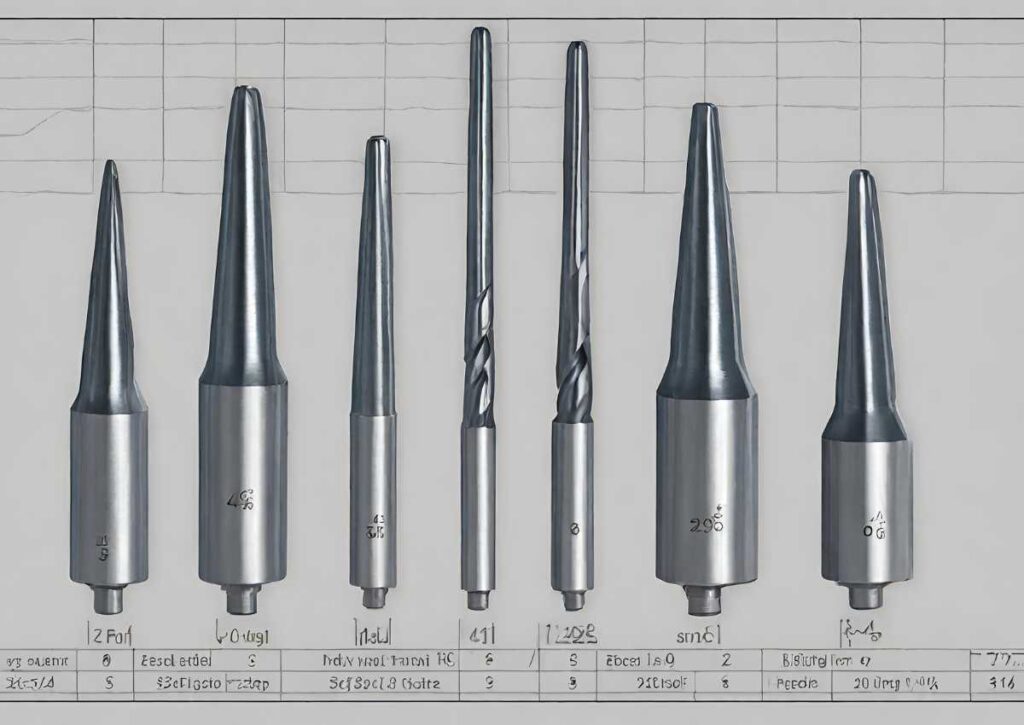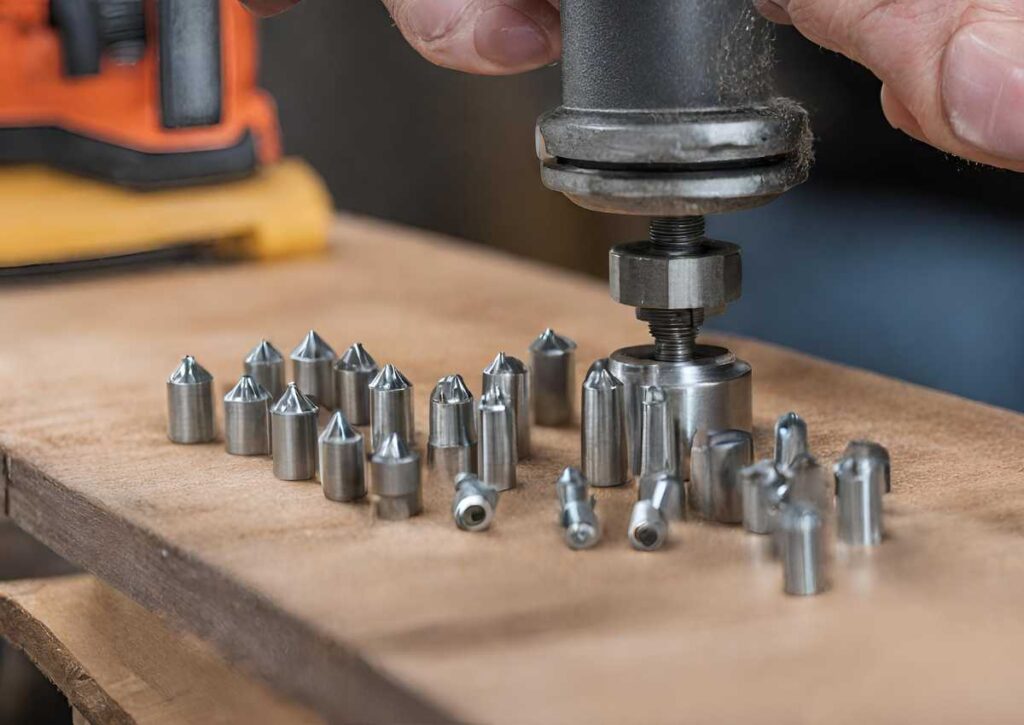Selecting the right drill bit size when working with rivets is important, as it directly impacts the integrity and strength of the joint.
Drill Bit for 3/16 rivet, the recommended drill bit size is #11. This size creates a hole that matches the diameter of the rivet, ensuring a secure and effective fastening.
Always double-check the manufacturer’s guidelines for precise recommendations.
In this blog, we’ll delve into the specifics of choosing the appropriate drill bit size for a 3/16 rivet, providing a step-by-step process and important considerations to ensure successful riveting.
Importance of Proper Sizing

Emphasizes using the correct drill bit size when working with rivets.
It ensures structural integrity and even load distribution, prevents material damage, avoids weak joints, maintains longevity, and reflects professionalism, all contributing to secure, durable, and aesthetically pleasing connections.
Structural Integrity
Use the correct drill bit size to preserve the structural integrity of the joint. When the hole drilled into the materials matches the rivet’s diameter, it allows the rivet to snugly fit into the hole.
This close fit is essential as it distributes the load evenly across the materials, preventing stress concentrations that could weaken the joint over time.
Ensuring Proper Load Distribution
A well-fitting rivet creates a secure connection by distributing the load or force exerted on the joint uniformly.
Maintaining Longevity
Properly sized holes and rivets contribute to the durability and longevity of the joint.
A precisely sized hole and rivet combination can withstand repeated loads, vibrations, and environmental conditions without deteriorating.
This longevity is vital, especially in applications where safety, longevity, and consistent performance are paramount.
Achieving Professional Results
Using the correct drill bit size demonstrates attention to detail and professionalism in projects.
Precision in hole sizing and rivet installation not only ensures optimal functionality but also enhances the overall appearance of the finished product.
Determining the Right Size Drill Bit

Identifying the rivet size (such as a 3/16 rivet with a 0.1875-inch diameter).
Calculating the appropriate drill bit diameter, slightly larger than the rivet, and selecting a 7/32 inch (approximately 0.2188 inch) drill bit for a secure fit.
This process ensures precise hole sizing for a reliable rivet connection.
Check Rivet Size
Start by determining the size of the rivet you’re working with. In this case, we’re dealing with a 3/16 rivet.
This measurement indicates that the diameter of the rivet shaft is 3/16 of an inch, which is approximately 0.1875 inches.
Calculate The Drill Bit Diameter
To select the appropriate drill bit size, you need a bit that’s slightly larger than the rivet’s diameter.
This ensures a snug fit without being too tight or too loose. There are a couple of ways to find the right drill bit size:
- Conversion Chart: Refer to a drill bit size conversion chart that matches fractional inches to decimal inches. Locate the closest decimal inch value to 3/16 (0.1875 inches). This will guide you to the proper drill bit size.
- Drill Bit Gauge: If you have access to a drill bit gauge, you can match the 3/16 measurement on the gauge to the corresponding drill bit size.
Choose the Drill Bit Size
For a 3/16 rivet, it’s advisable to select a drill bit that’s slightly larger to allow for a secure fit.
A 7/32-inch drill bit, which is approximately 0.2188 inches in diameter, would be suitable for this purpose.
This slight increase in drill bit diameter ensures that the hole accommodates the rivet while providing enough room for it to be inserted without excessive force.
Consider Material And Application
Remember that the choice of drill bit size also depends on the material you’re working with. Softer materials require a slightly different size for optimal results.
Consider the application’s specific requirements. If precision or aesthetics are critical, you might need to adjust the drill bit size accordingly.
Steps for Riveting with a 3/16 Rivet

It involves marking the location, securing materials, drilling with a 7/32-inch bit, inserting the rivet, using a rivet gun or hammer to deform the tail, and potentially trimming excess tail.
This process ensures accurate alignment and a secure joint between materials.
Marking
Begin by marking the precise location on the materials where you intend to place the rivet. Accurate alignment of these marks ensures a proper and effective joint between the materials.
Secure the Materials
To prevent any unintended movement during the drilling and riveting process, clamp or securely hold the materials together.
This stability is essential to maintaining alignment and achieving precise results.
Drilling
With the previously calculated 7/32-inch (approximately 0.2188-inch) drill bit, meticulously drill a hole through both materials at the marked location.
Maintain the drill perpendicular to the surface to ensure that the hole is straight and correctly aligned.
Inserting the Rivet
Take the 3/16-inch rivet and insert it into the hole you’ve drilled. Ensure that the head of the rivet is on the side where you want it to be visible once the rivet is installed.
The tail of the rivet should be on the opposite side.
Riveting Process
Utilize a rivet gun or a hammer and rivet set to begin the riveting process. Place the tool’s nose against the rivet’s tail. Apply steady pressure to deform the tail of the rivet.
This deformation creates a mechanical connection between the materials, securely holding them together.
Finishing Touches
After completing the riveting process, assess the joint to ensure it’s secure and aligned. If there’s an excess rivet tail protruding from the joint, you can trim it using suitable cutting tools.
This step contributes to the final appearance of the joint and ensures there are no sharp edges.
Conclusion
Selecting the right drill bit size for a 3/16-inch rivet in riveting is crucial for strong, stable, and lasting connections.
Understanding the importance of sizing, following precise steps, and considering material specifics ensure secure fits and prevent damage.
Each stage, from marking to riveting, matters for flawless assembly. Prioritize safety and tailor your approach based on material and practice.
The synergy between rivet size, drill bit choice, and execution is key. Apply this knowledge to durable, resilient projects.
Related post: What Size Drill Bit For M6 Rivnut
FAQs
What size drill bit do I need for a 3/16-inch rivet?
You’ll need a drill bit that matches the size of the rivet, which is 3/16 of an inch in diameter.
Why is the right drill bit size important for a 3/16-inch rivet?
Using the correct size ensures the hole matches the rivet, creating a snug fit for a strong connection.
What happens if I use the wrong drill bit for 3/16 rivet?
Using a larger or smaller drill bit can lead to loose or tight fits, weakening the connection and potentially causing damage.
How do I determine the correct drill bit size for a 3/16-inch rivet?
Measure the diameter of the rivet and choose a drill bit that matches that size to create a precise hole.
What precautions should I take when drilling for a 3/16-inch rivet?
Ensure safety by wearing protective gear and drilling carefully to create a clean and accurate hole for the rivet.









